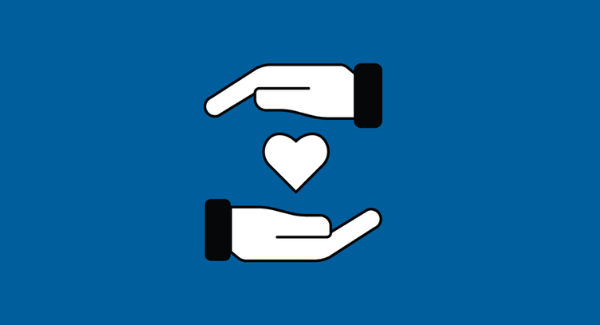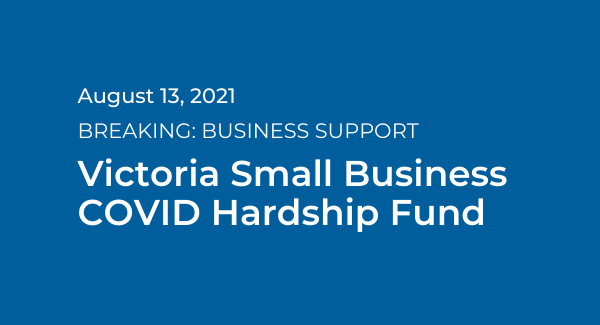What small business stimulus package can help with my cash flow?
Everything you need to know about what small business support packages you're entitled to.
Solid cash flow is essential to allow businesses to have the money on hand to pay staff and suppliers. It also means you can invest in growth strategies and marketing your business.
Many established businesses are used to seeing a regular amount of cash flowing into their business, allowing them to forward plan and make proactive and strategic business decisions. However, when the COVID-19 pandemic spread, Australian business owners watched their income disappear overnight. Through no fault of their own, they saw their cash flow severely disrupted.
Even the most successful businesses prior to the pandemic would have a hard time staying afloat with no indication of when money will start flowing back into their business. While some business owners may have a buffer of a few months to cover expenses, many small businesses couldn’t have predicted in their cash flow projections that their income would take such an extended hit.
That is why at the end of March this year, the Federal Government announced a range of business stimulus packages to help Australian business owners through the economic crisis. As we head towards being six months into when businesses in Australia really started to feel the impact of COVID-19, we take a look at what current small business stimulus packages are available to you now and what has changed since the business stimulus support packages came into effect.
JobKeeper Payment
JobKeeper was announced back at the end of March as a payment designed to help retain staff. It’s currently a fortnightly payment rate of $1,500 for each eligible staff member and when introduced it was meant to come to an end on September 27th.
With the persistence of COVID-19 in our country, it was recently announced that the Government will continue the JobKeeper payment until March 2021. However, the qualification process that businesses have gone through before is being changed and eligible businesses will be required to re-qualify.
We’ve covered the changes to Jobkeeper in a detailed article already, but to summarise, the JobKeeper payments will be reduced from what they have been during the first 6 months of the pandemic support and the requirements for eligibility will also change. Since publishing the article, and with the prevalence of the pandemic in Victoria, the Government has announced further changes in terms of the revised qualification period and to advise that full time and part time employees who were hired before 1 July 2020 are now also eligible.
From 28 September 2020, businesses and not-for-profits looking to claim JobKeeper will be required to re-assess their eligibility using the decline in turnover test with reference to their actual turnover in the September quarter 2020. They will then need to further reassess their eligibility in January 2021 for the period from 4 January to 28 March 2021, using the December quarters actual turnover.
This time around there will be two tiers of candidates, meaning two different payments for full-time employees and part-time employees. The current fortnightly payment rate of $1,500 per employee will be reduced to $1,200 per employee as of September 28th 2020 and then down to $1000 as of January 4th 2021. From September 28th, 2020, employees who work less than 20 hours will receive a lower payment of $750 per fortnight.
Be sure to chat with your accountant to determine if you remain eligible for JobKeeper into October and beyond. Or get in touch with one of our Client Directors today to determine your eligibility.

Access to credit through the SME Guarantee Scheme
One of the biggest challenges facing business owners who have been receiving JobKeeper payments is the requirement to pay staff for the month before you are reimbursed. Plus with the blanket approach of the set payment across the board, this has meant that some business owners have even faced increased payroll liabilities during this time.
To help with these short term cash flow challenges the Government provided a guarantee of 50 per cent to financial lenders to support unsecured new short term loans, under the Coronavirus SME Guarantee Scheme. The Scheme enables lenders to provide credit while ensuring businesses receive low-interest rates.
Recently the Scheme was extended to be available for new loans until 30 June 2021. The first phase of the scheme to support small business owners with their flow of credit is still open for new loans made by participating lenders up until 30 September 2020. On 1 October 2020, the second phase of the Scheme will be available for loans made until 30 June 2021.
Cash Flow Boost payments
A cash flow boost of up to $100,000 for eligible businesses was introduced back in March to be paid as an offset against payments due. This was delivered as part of a business’s regular BAS reporting and activity statement system so business owners did not need to apply for the payment.
As accountants, we’ve helped many businesses lodge their activity statements to prove they were eligible so if you need some guidance in this area we are happy to help.
The Government provided tax-free cash flow boosts of between $20,000 and $100,000 to businesses who were eligible, with the first boost delivered from April 28th 2020.
Eligible business owners who received the first cash flow boost receive additional cash flow boosts, from June to September 2020. The credit will be received in two to four instalments, depending on your BAS reporting period.
Support for apprentices and trainees
A subsidy was introduced for businesses with fewer than 20 employees who retain an apprentice or trainee. Eligible employers were able to apply for a wage subsidy of 50 per cent of the apprentice’s or trainee’s wage paid during the 9 months from 1 January 2020 to 30 September 2020, up to a cap of $7,000 per quarter.
In light of the ongoing impacts on business, this was extended and expanded so that from 1 July 2020, the subsidy was made available to small and medium businesses with fewer than 200 employees. Eligible employers can apply for the wage subsidy during the 9 months from 1 July 2020 to 31 March 2021.
Increases to the instant asset write off
From 12 March 2020, the Government increased the instant asset write off threshold from $30,000 to $150,000 and expanded access to include businesses with an annual turnover of less than $500 million (up from $50 million) until 30 June 2020.
On 9 June 2020, this was extended until 31 December 2020 to give eligible businesses additional time to invest. There is no indication at this stage as to whether this will be extended into 2021.
Temporary relief for distressed businesses
Temporary changes to insolvency laws were made to ensure businesses have a safety net to resume operations when the crisis passes. It involves a temporary increase in the threshold for when creditors can issue a statutory demand on a business and increases the time you have to respond.
It also temporarily increases the threshold for a creditor to initiate bankruptcy proceedings and provides relief for directors from any personal liability for trading while insolvent. This means that when economic conditions do improve, you can pay back the debt incurred and are not in a position where you have been pushed into insolvency.
This measure is due to end on 24 September 2020 and at this stage, there has been no statement made about if this will be extended.

Industry and state-based business stimulus package support
As we’ve seen since March, different industries across Australia have been impacted at varying levels. For example, the tourism industry will likely remain impacted for years to come, and the arts and entertainment industry has also been struggling since the onset of the virus. Specialised support packages have been introduced for these severely impacted industries.
We are also seeing different states within Australia experiencing the impacts of coronavirus differently. States have responded by providing business support packages specific to the challenges and severity of the virus in their region.
For example, the Victorian Government has responded to the impacts their tightened lockdown has had on business, by providing additional state-based support for eligible businesses.
The latest business stimulus and support package for Victoria includes:
- $10,000 for employing businesses in the metropolitan Melbourne and Mitchell Shire as well as $5,000 for employing businesses in regional Victoria. This is provided by the expansion program of the Business Support Fund.
- A $30 million fund to support Victoria’s night-time economy for the heavily impacted hospitality industry.
- There is now a $40 million capped fund for businesses in regional tourism, to help cover the cost of refunds.
- To help small businesses in Melbourne’s CBD that are dealing with a large and sustained shock to their trading environments, the government has released a $20 million fund.
- An extension and expansion to the payroll tax deferral.
- Commercial tenant rent relief
If you’d like to learn more about the Victorian business support available visit the Business Victoria website.
You can also check out what is available in your state in the following places
Find out which business stimulus packages are available to you and get in touch today.
Share this
You May Also Like
These Related Stories

COVID-19 Business Grant Applications | NOW OPEN

What does JobKeeper 2.0 mean for you and your business?

/Brand/Logos/Kelly%20Partners%20Accountants%20Logo/Kelly-Partners-Accountants-Horizontal-Logo.webp?width=1500&height=212&name=Kelly-Partners-Accountants-Horizontal-Logo.webp)